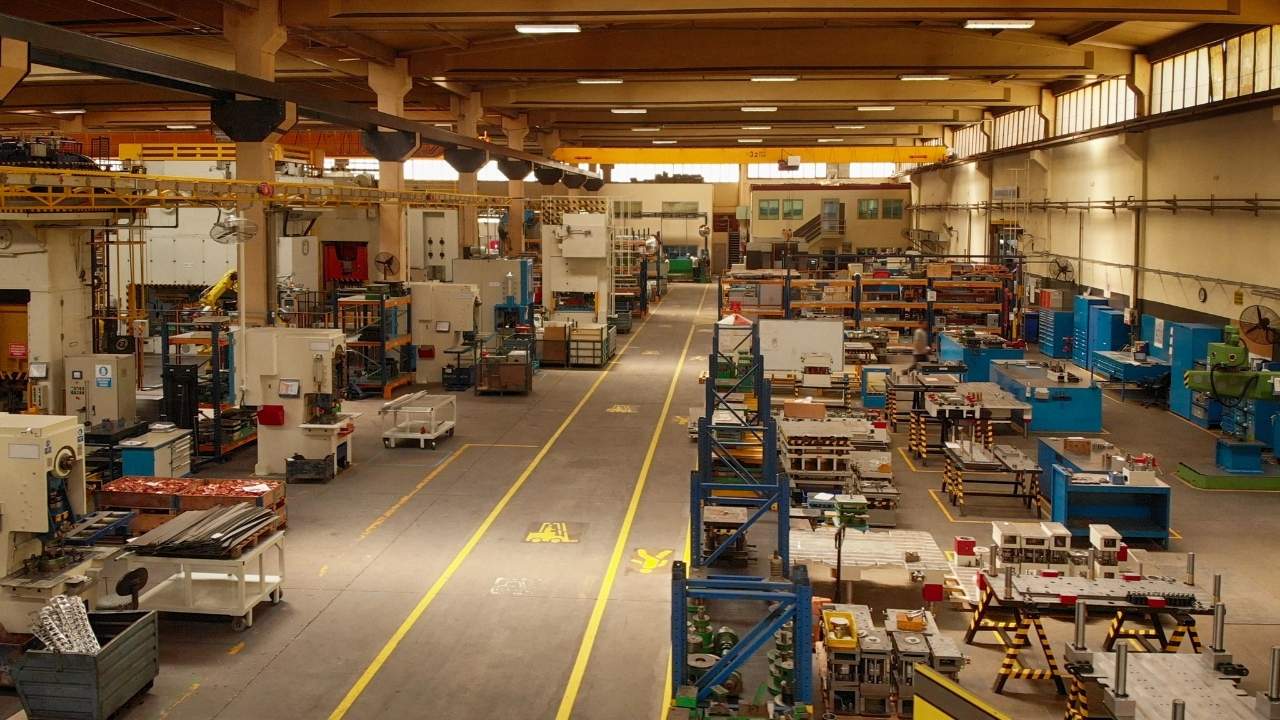How does a Cloud ERP help in cutting costs?
Currently, a Cloud ERP is all the rage in the market right now and a lot of businesses are asking the question “How can a Cloud ERP help cut costs?”.
Since, business operations have become complex and are constantly changing, keeping up with trends while maintaining margins has become tricky. The quickest way to increase profits is by cutting costs. Here is where a Cloud ERP can help in keeping costs in check; simply by cutting operational costs and at the same time improving efficiencies.
Well, it may sound easy but putting it into practice can be difficult. Below we’ve outlined four excellent strategies to cut your costs and increase profits.
[widget id=”custom_html-22″]
Strategies to cut costs and increase profits
- Increase productivity – Improve processes and cut the fat
This strategy isn’t intended to cut the hours of your staff—it’s to make them more efficient. Even a well-trained staff sometimes can’t see the forest for the trees, and that goes for managers too. A quick way to find these inefficiencies is to interview staff members and write out the processes that are problematic.
Once your process is written out, figure out where the bottlenecks are occurring. Often times these are happening when hand-overs occur, or when manual work is being performed; such as manual reports, data entry, etc.
An example of this is an experience I had working at an eCommerce and distribution company. We were having issues with lengthy return processing—from return inquiry to refund it was taking upwards of three weeks for customers to receive a refund. Compare that to Amazon’s return policy, where your refund is sent as soon as tracking information for your return has been registered—we were way off the mark.
We wrote out the process, which ended up being 12 steps—that’s quite a few steps for a simple return. Once we wrote out the entire process, it turned out that staff inefficiency wasn’t the problem at all—it was a lack of automation being used with the business system. From unnecessary handoffs to silos of return information, the key to solving the problem was to rely more on the business systems to automate the process.
[widget id=”custom_html-24″]
Some of the inefficiencies were remedied by:
- Offering customers the ability to initiate online through an automated system, and not requiring CSRs to respond to email or phone inquiries.
- Reports in the system were implemented to notify the warehouse of incoming returns instead of a manual list being sent from the CSR.
- Shipping and receiving were trained on the CRM, and in a single click were able to complete the return; add items back to inventory, process the refund, and notify the customer by email.
By the end of it, the company was able to cut the return process down to a couple of days (plus return shipping time). In return, customer service had more time to more promptly respond to questions, which resulted in higher sales—and shipping and receiving were able to ship more per day, resulting in returning happy customers.
[widget id=”custom_html-40″]
- Watch for trends – Change pricing on the fly
The pricing of products and services fluctuates constantly. It’s the nature of the beast. From seasonality to cyclicality, with the right data, your business should be able to maximize profits when the timing is right.
In some cases, it’s easy to know when a trend is going to happen— for example, a swimsuit shop knows sales are going to ramp up in spring and summer and ramp down in fall and winter. They are able to put items on sale in slower seasons to increase sales and maximize profits by charging full price when demand is high.
For the rest of us, that can’t simply rely on looking at the weather forecast, our businesses need a more sophisticated solution to identify opportunities.
What is the key ingredient to making better business decisions? Data.
If you’re like most SMBs, you’ve likely found success using a home-grown network of business management systems; standalone CRM, standalone accounting, standalone inventory management system, etc.
Congrats! However, if you’re business is still operating with silos of information, it might be time to re-evaluate the software you are using and enable yourself with key data insights.
With the proper business system, especially all-in-one systems, you should be able to tell the trends associated with your products and services by pulling a simple sales report.
[widget id=”custom_html-21″]
But, what about ticking off your customers? Be tactful. When you have the data to support a price change, keep a few things in mind:
- The time it right – Be diligent that a price increase won’t affect the perceived value of your customers. Tip: Try timing it during the low season.
- Play the numbers game – Enable bundle offers, or volume discounts, to help show the perceived value. For example, if you are increasing the cost of 10 widgets to $150 from $120, add bundles like 8 for $140, or 5 for $120 to increase the perceived value, without focusing on the price increase.
- Temporary discounts – One way to smooth the path of your price increase is to increase the price in concert with a temporary discount. This gives an incentive to customers to purchase while the discount is available (and at the same price) and indirectly notifies them that the price is increasing by the end of the promotion.
- Find new markets or channels – If you are finding that certain channels are more willing to pay a higher price than others— i.e. amazon marketing place vs. website marketing place— then update your pricing to reflect that change.
[widget id=”custom_html-23″]
- Increase your prices per channel – Price your goods correctly
The cost of using multiple channels varies by individual channel. eBay charges a listing fee for your item, plus a fraction of the final sale price and if you are using PayPal there is an additional fee. Amazon has fees based on your delivery method, your account type, and more.
If you are charging the same price for your items on all channels, you may be losing revenue due to the Costs of Good Sold on those particular channels. (For what it’s worth, sometimes increases in sales by expanding your channels may justify this method, but if doing this as a default, you may want to reconsider your strategy.) To ensure your business is not leaking revenue, it’s important to calculate the COGS per channel.
In a previous blog on Multi-Channel Commerce, I discussed how 70% of Prime users check Amazon before searching other sites for products they are looking for. What does that mean for you?
If you are selling on Amazon, you might be able to get away with charging a bit more for your product simply because their customers are dedicated to using their preferred marketplace.
This also creates an opportunity for you as a retailer to convert Amazon customers to your own customers. How? Just because 70% of customers start their search on amazon, not all of them finish. Should they find your product on Amazon but then also find you on your dedicated web store with a better price, you have the opportunity to convert a new customer successfully.
Note: For some sellers of popular products, increasing the pricing on Amazon may not be advised. For these retailers, it’s recommended to calculate the COGS for channels like this to determine if the increase in sales is worth the cut in margins.
[widget id=”custom_html-25″]
- Modernize your business – Your business only runs as well as your software
How old is your ERP or accounting system? It may be older than you think.
Depending on who you talk to, it’s recommended to upgrade your system every 5 and 10 years. Unfortunately, this recommendation is based on factors that might not be the best for your business in the long run. The biggest reason for waiting so long? Amortization of the cost.
Having a good ERP system used to come at a high price for SMBs. Why? Because ERP system manufacturers from the 20th century never saw that segment as profitable enough to serve. If we’re lucky enough to get one, you know the cost was anywhere between $80-150K for the system, implementation cost of $20-40k, and annual “service” fees of $2-5k per year. At that price, it’s no wonder why companies try and amortize over a longer period of time.
Making matters worse: Many businesses are running on “newer” ERP systems that were built on old technology—sometimes as old as 20-30 years. These “legacy” systems were great back in the day but modern businesses need to adhere to a new set of rules. Trying to modernize these systems is like trying to run an mp3 player through a tape deck—sure they sell adapters but still lack quality and sustained reliability.
[widget id=”custom_html-31″]
Luckily, modern ERP systems that enable your business to compete are no longer out of reach for SMBs. Companies, like Versa Cloud ERP, are now offering complete, modern, cloud solutions that were built with SMBs in mind.
With the rise of cloud computing, it’s no longer necessary to shovel out hundreds of thousands of dollars on systems that will only last you a few years. Nowadays you can subscribe to systems, that will always be up-to-date with modern tools and functions, without expense. Talk to experts before falling victim to a bias on-premise vs. cloud—you’ll be surprised at how much better cloud systems are.
If you’re thinking this isn’t a quick solution for moving margin, I’ve got more good news for you. Systems, like Versa Cloud ERP, take as few as 4 weeks to implement and migrate. That means this time next month you could be up and running.
We hope you found these tips for increasing profits by moving margins helpful. In closing, we recommend you use a strategy that makes sense for your business. To learn more tips and tricks on how to modernize your business in the Age of Amazon, check out our ebook below!
[widget id=”custom_html-33″]
Effectively manage your financials, inventory, and production workflows with our award-winning ERP.
Let Versa Cloud Erp’s do the heavy lifting for you.
[widget id=”custom_html-42″]
[widget id=”custom_html-30″]
Do Business on the Move!
Make your businesses hassle-free and cut the heavyweights sign up for the Versa Cloud ERP today!!
Join our Versa Community and be Future-ready with us.
[widget id=”custom_html-20″]






